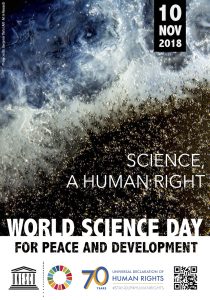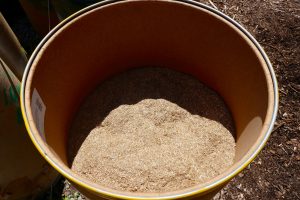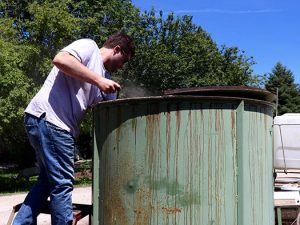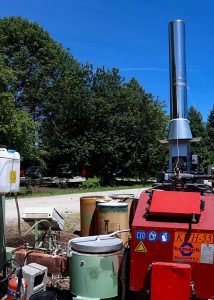The new year is a good time to reflect on the previous year’s accomplishments, as well as make plans for the year ahead. Last year was a successful one for ISTC’s researchers. They were awarded five out of the five grants they submitted to Department of Energy, as well as one from Illinois-Indiana Sea Grant. They include:
- Researchers Nandakishore Rajagopalan and Kevin OBrien’s effort to examine the scalability of Rajagopalan’s patented waste heat coupled forward osmosis (FO)-based water treatment system, Aquapod©, to improve wastewater quality and reduce water usage in a coal-fired +500 megawatt power plant.
- A public-private partnership that demonstrates the feasibility of producing animal feed and/or biofuels at a significantly lower cost. The project combines technologies for bio-energy production that have been developed at ISTC in collaboration with HeliosNRG, headquartered in East Amherst, NY.
- A large pilot scale test of technology to remove CO2 from power plant flue emissions. ISTC partnered with two multinational companies, Linde and BASF, to develop a new solvent based system to capture CO2 from power plants. They have partnered with Affiliated Engineers Inc. (AEI) and Affiliated Construction Services (ACS), which have extensive experience with designing and building systems for power plant applications. The team led by ISTC received $850,000 in spring 2018 for Phase I of the pilot testing project, which involves designing a 10 MW capture system that would be retrofitted to a central Illinois power plant. The group plans to compete for subsequent phases, which could lead to the development of a supply chain for captured CO2.
- Advancing carbon capture absorption technology from lab to bench scale. ISTC has been assisting with an Illinois State Geological Survey lab-scale project to develop a biphasic CO2 absorption process (BiCAP) with multiple stages of liquid-liquid solvent phase separation, which increases carbon capture capacity. ISGS and ISTC have received an additional $3 million to conduct a three-year bench scale (40 KWe) study of their BiCAP technology.
- Validating two innovative technologies that have the potential to significantly reduce flue gas aerosol concentrations from large-scale coal-fired power production. The technologies will be tested at the University of Illinois Abbott Power Plant. The results will be used as a benchmark for comparing their performance and cost to those of existing options.
- An expansion of on-going research being conducted by John Scott and his team. Through funding from the Hazardous Waste Research Fund and the Annis Water Resource Institute at Grand Valley State University, they are studying the effects of microplastic type and deployment time in Lake Muskegon sediments and the water column on sorption of persistent organic pollutants (POPs) to microplastic particles. The investigation includes legacy contaminants like chlorinated pesticides, polybrominated biphenyl ethers (PBDEs), polychlorinated biphenyls (PCBs), and polycyclic aromatic hydrocarbons (PAHs). New funds from Illinois-Indiana Sea Grant will allow the team to broaden their scope to study the role of microplastics as a carrier of PFAS in water and sediment.
Read more about these and other projects in ISTC’s 2018 annual report. If you’re looking for suggestions on making this year more sustainable, check out some of our blog posts from 2018.


 The phrase “human rights” usually brings to mind things like, the right to life and liberty, freedom from slavery and torture, freedom of opinion and expression, and the right to work and education. The right to participate in and benefit from science isn’t something that usually comes to mind.
The phrase “human rights” usually brings to mind things like, the right to life and liberty, freedom from slavery and torture, freedom of opinion and expression, and the right to work and education. The right to participate in and benefit from science isn’t something that usually comes to mind. 







